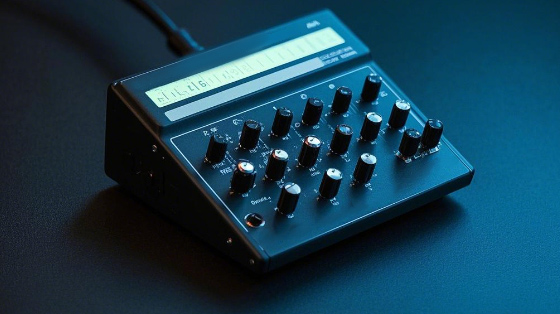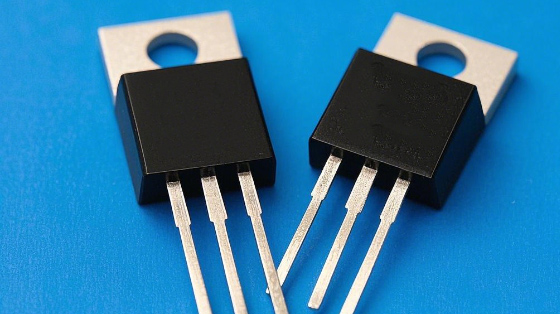BomKey Electronics!
Master of precision regulation of electronic signals
1/15/2025 3:02:59 PM
In today's complex and ever-changing field of electronic technology, oscillators, resonators, and filters are like highly skilled masters. They play an indispensable role in many electronic devices and systems with their unique ability to control electronic signals. From smartphones and computers for daily use, to professional communication base stations and medical instruments, to high-end aerospace equipment and industrial automation production lines, these electronic components are silently shaping our digital lives and driving the continuous development of technology.
Oscillators, as a core component for generating periodic signals, operate based on specific physical or electronic mechanisms, capable of generating stable oscillation waveforms without external input signals. Common types of oscillators include crystal oscillators, LC oscillators, and RC oscillators. Crystal oscillators are favored for their extremely high frequency stability and accuracy. They utilize the piezoelectric effect of quartz crystals. When a voltage is applied across the crystal, the crystal generates mechanical vibrations, which in turn generate an alternating electric field, resulting in a stable oscillation signal. The frequency stability of a crystal oscillator can usually reach the ppm (parts per million) level, which makes it the first choice in applications that require extremely high frequency accuracy, such as the clock circuit of a computer and the frequency reference source in a communication device. In a computer system, the clock signal is like the "heartbeat" of the entire system, controlling the synchronization of various components. The high-precision clock signal provided by the crystal oscillator ensures that the computer can operate stably and efficiently, and the transmission and processing of data can be carried out accurately. The LC oscillator is a resonant circuit composed of an inductor (L) and a capacitor (C), which generates oscillation through the exchange of energy between the capacitor and the inductor. It has the characteristics of simple structure and wide frequency adjustment range, and is often used in some situations where the frequency accuracy is not particularly high, but the frequency needs to be variable within a certain range, such as the local oscillator circuit of the radio. By adjusting the parameters of the LC circuit, radio signals of different frequencies can be selected. RC oscillators use the charge and discharge characteristics of resistors (R) and capacitors (C) to generate oscillating signals. Its circuit is relatively simple and low-cost, and is often used in some low-frequency signal generators or simple clock circuits.
 Oscillators are widely used in electronic equipment. In communication systems, whether it is wireless communication or wired communication, oscillators play a pivotal role. In wireless communication base stations, the high-frequency carrier signal generated by the oscillator is the basis for wireless transmission of information. Carrier signals of different frequencies can carry different communication channels, and information such as voice\ data is loaded onto the carrier signal through modulation technology, and then sent out. In mobile end points such as mobile phones, oscillators also provide frequency reference for signal transmission and reception, ensuring that mobile phones can communicate accurately with base stations. In the field of radio and television, transmitters of TV stations and radio stations rely on oscillators to generate radio frequency signals of specific frequencies, modulate video and audio program signals onto the radio frequency signals, and then transmit them. Viewers and listeners recover the original program signals through oscillators and demodulation circuits in the receiving equipment. In addition, in test and measurement instruments, such as signal generators\ spectrum analyzers, etc., oscillators are also key components for generating various test signals, providing an indispensable tool for the development, production, and maintenance of electronic equipment.
Oscillators are widely used in electronic equipment. In communication systems, whether it is wireless communication or wired communication, oscillators play a pivotal role. In wireless communication base stations, the high-frequency carrier signal generated by the oscillator is the basis for wireless transmission of information. Carrier signals of different frequencies can carry different communication channels, and information such as voice\ data is loaded onto the carrier signal through modulation technology, and then sent out. In mobile end points such as mobile phones, oscillators also provide frequency reference for signal transmission and reception, ensuring that mobile phones can communicate accurately with base stations. In the field of radio and television, transmitters of TV stations and radio stations rely on oscillators to generate radio frequency signals of specific frequencies, modulate video and audio program signals onto the radio frequency signals, and then transmit them. Viewers and listeners recover the original program signals through oscillators and demodulation circuits in the receiving equipment. In addition, in test and measurement instruments, such as signal generators\ spectrum analyzers, etc., oscillators are also key components for generating various test signals, providing an indispensable tool for the development, production, and maintenance of electronic equipment.
The resonator, closely related to the oscillator, is mainly used to select or enhance the signal of a specific frequency. Its working principle is based on the resonant phenomenon. When the external signal frequency matches the natural frequency of the resonator, the resonator will generate a strong response to the signal, while the signal of other frequencies shows a large impedance, so as to realize the screening or amplification of the specific frequency signal. Common resonators include quartz crystal resonators, ceramic resonators, LC resonators, etc. Due to its excellent frequency stability and quality factor, quartz crystal resonators are widely used in high-precision frequency control and filtering circuits. For example, in a Global Position System (GPS) receiver, a quartz crystal resonator is used to stabilize the frequency of the local oscillator, ensuring that the receiver can accurately receive and process satellite signals, thus achieving accurate positioning functions. Ceramic resonators are widely used in some consumer electronics products that require relatively low frequency accuracy, such as clock circuits or oscillation circuits in electronic toys and remote controls, due to their small size and low cost. LC resonators determine the resonant frequency by adjusting the value of inductance and capacitance, and are often used in filter/antenna matching circuits in radio frequency circuits. They can effectively select the desired frequency signal, suppress interference signals, and improve the performance of radio frequency circuits.
In practical applications, resonators play an important role in the fields of communication, radar, and electronic countermeasures. In the receiver front end of a communication system, the filter composed of resonators can selectively receive signals of the desired frequency, filter out interference signals of other frequencies, and improve the signal to noise ratio of the received signal, thereby ensuring the quality of communication. In radar systems, resonators are used to generate and receive radar waves of specific frequencies, and detect information such as the position, velocity, and shape of the target by analyzing the echo signal. In the field of electronic countermeasures, resonators can be used as frequency-selective components in jamming machines or anti-jamming equipment to interfere with enemy communications or radar signals or avoid enemy interference.
Filters, as a key tool in electronic signal processing, their main function is to allow signals in a specific frequency range to pass through, while attenuating or blocking signals of other frequencies, so as to achieve shaping and purification of the signal spectrum. Filters can be divided into low-pass filters, high-pass filters, band-pass filters, and band-stop filters according to their frequency response characteristics. Low-pass filters allow signals below the cutoff frequency to pass through, while attenuating signals above the cutoff frequency, and are often used to remove high-frequency noise in the signal or smooth the signal. For example, in audio systems, low-pass filters can filter out high-frequency noise in the audio signal, making the sound purer and softer. A high-pass filter, on the other hand, allows signals higher than the cutoff frequency to pass through and attenuates signals lower than the cutoff frequency. In image processing, a high-pass filter can be used to extract edge information of an image and enhance the contrast of the image. A band-pass filter only allows signals within a specific frequency range to pass through, and is often used to select the desired signal from many frequency signals. For example, in a wireless communication receiver, a band-pass filter is used to select a specific channel signal and eliminate interference from other channels. A band-stop filter is used to prevent signals within a specific frequency range from passing through without affecting signals at other frequencies. In some situations where specific frequency interference needs to be suppressed, such as harmonic suppression in power systems, a band-stop filter is used.
Filters can be implemented in a variety of ways, including passive filters and active filters. Passive filters are composed of passive components such as resistors, capacitors, and inductors. They have a simple structure, low cost, and high reliability. They are suitable for applications where performance requirements are not particularly high. For example, in a simple power supply filter circuit, a passive filter composed of capacitors and inductors can effectively filter out AC ripple in the power supply and provide a more stable DC voltage for subsequent circuits. Active filters are based on passive filters by adding active components such as amplifiers, which have better filtering performance and can achieve more complex filtering functions, such as flexible adjustment of signal gain control and frequency characteristics. In the fields of audio processing and communication signal processing, active filters are widely used. For example, in audio amplifiers, active filters can equalize audio signals as needed and adjust the volume of different frequency components to meet users' needs for different sound quality.
With the rapid development of electronic technology, the performance requirements for oscillators, resonators and filters are also constantly improving. In modern communication technologies, such as 5G communication, its high-frequency band, large bandwidth, and high-speed characteristics require oscillators to generate higher frequencies and more stable signals. Resonators have higher quality factors and smaller sizes, and filters can achieve more accurate frequency selection and faster response speeds. In order to meet these demands, new materials and manufacturing processes continue to emerge. In terms of materials, some materials with special electromagnetic properties, such as high-temperature superconducting materials and piezoelectric composites, have begun to be used in the production of oscillators, resonators, and filters. High-temperature superconducting materials can reduce the loss of resonators and filters and improve their performance; piezoelectric composites can improve the frequency stability and output power of oscillators. In terms of manufacturing processes, the development of microelectromechanical systems (MEMS) technology\ lithography technology\ thin film deposition technology has enabled these components to achieve smaller size\ higher integration and better consistency. For example, resonators and filters made with MEMS technology can integrate multiple components on a tiny chip, greatly reducing the size of the device and improving production efficiency and reliability.
In addition, in emerging fields such as the Internet of Things, artificial intelligence, and autonomous driving, oscillators, resonators, and filters also face new opportunities and challenges. In Internet of Things devices, because they usually require low-power/miniaturized components, how to reduce the power consumption and volume of these components while ensuring performance has become the focus of research. In artificial intelligence systems, the speed and accuracy of signal processing are extremely high, and oscillators, resonators, and filters need to be able to adapt to the needs of high-speed signal processing to support the efficient operation of artificial intelligence algorithms. In autonomous cars, sensors such as radar and lidar, as well as oscillators, resonators and filters in communication systems, need to have higher reliability and anti-interference capabilities to ensure the safe operation of vehicles in complex environments.
In summary, oscillators, resonators, and filters, as masters of precise regulation of electronic signals, are widely and deeply used in various fields of electronic technology. Their continuous development and innovation not only promote the improvement of the performance of electronic devices, but also provide a solid technical support for the development of emerging technologies, enabling us to enjoy a more convenient, efficient, and intelligent way of life and work in the digital age.
Oscillators, as a core component for generating periodic signals, operate based on specific physical or electronic mechanisms, capable of generating stable oscillation waveforms without external input signals. Common types of oscillators include crystal oscillators, LC oscillators, and RC oscillators. Crystal oscillators are favored for their extremely high frequency stability and accuracy. They utilize the piezoelectric effect of quartz crystals. When a voltage is applied across the crystal, the crystal generates mechanical vibrations, which in turn generate an alternating electric field, resulting in a stable oscillation signal. The frequency stability of a crystal oscillator can usually reach the ppm (parts per million) level, which makes it the first choice in applications that require extremely high frequency accuracy, such as the clock circuit of a computer and the frequency reference source in a communication device. In a computer system, the clock signal is like the "heartbeat" of the entire system, controlling the synchronization of various components. The high-precision clock signal provided by the crystal oscillator ensures that the computer can operate stably and efficiently, and the transmission and processing of data can be carried out accurately. The LC oscillator is a resonant circuit composed of an inductor (L) and a capacitor (C), which generates oscillation through the exchange of energy between the capacitor and the inductor. It has the characteristics of simple structure and wide frequency adjustment range, and is often used in some situations where the frequency accuracy is not particularly high, but the frequency needs to be variable within a certain range, such as the local oscillator circuit of the radio. By adjusting the parameters of the LC circuit, radio signals of different frequencies can be selected. RC oscillators use the charge and discharge characteristics of resistors (R) and capacitors (C) to generate oscillating signals. Its circuit is relatively simple and low-cost, and is often used in some low-frequency signal generators or simple clock circuits.

The resonator, closely related to the oscillator, is mainly used to select or enhance the signal of a specific frequency. Its working principle is based on the resonant phenomenon. When the external signal frequency matches the natural frequency of the resonator, the resonator will generate a strong response to the signal, while the signal of other frequencies shows a large impedance, so as to realize the screening or amplification of the specific frequency signal. Common resonators include quartz crystal resonators, ceramic resonators, LC resonators, etc. Due to its excellent frequency stability and quality factor, quartz crystal resonators are widely used in high-precision frequency control and filtering circuits. For example, in a Global Position System (GPS) receiver, a quartz crystal resonator is used to stabilize the frequency of the local oscillator, ensuring that the receiver can accurately receive and process satellite signals, thus achieving accurate positioning functions. Ceramic resonators are widely used in some consumer electronics products that require relatively low frequency accuracy, such as clock circuits or oscillation circuits in electronic toys and remote controls, due to their small size and low cost. LC resonators determine the resonant frequency by adjusting the value of inductance and capacitance, and are often used in filter/antenna matching circuits in radio frequency circuits. They can effectively select the desired frequency signal, suppress interference signals, and improve the performance of radio frequency circuits.
In practical applications, resonators play an important role in the fields of communication, radar, and electronic countermeasures. In the receiver front end of a communication system, the filter composed of resonators can selectively receive signals of the desired frequency, filter out interference signals of other frequencies, and improve the signal to noise ratio of the received signal, thereby ensuring the quality of communication. In radar systems, resonators are used to generate and receive radar waves of specific frequencies, and detect information such as the position, velocity, and shape of the target by analyzing the echo signal. In the field of electronic countermeasures, resonators can be used as frequency-selective components in jamming machines or anti-jamming equipment to interfere with enemy communications or radar signals or avoid enemy interference.
Filters, as a key tool in electronic signal processing, their main function is to allow signals in a specific frequency range to pass through, while attenuating or blocking signals of other frequencies, so as to achieve shaping and purification of the signal spectrum. Filters can be divided into low-pass filters, high-pass filters, band-pass filters, and band-stop filters according to their frequency response characteristics. Low-pass filters allow signals below the cutoff frequency to pass through, while attenuating signals above the cutoff frequency, and are often used to remove high-frequency noise in the signal or smooth the signal. For example, in audio systems, low-pass filters can filter out high-frequency noise in the audio signal, making the sound purer and softer. A high-pass filter, on the other hand, allows signals higher than the cutoff frequency to pass through and attenuates signals lower than the cutoff frequency. In image processing, a high-pass filter can be used to extract edge information of an image and enhance the contrast of the image. A band-pass filter only allows signals within a specific frequency range to pass through, and is often used to select the desired signal from many frequency signals. For example, in a wireless communication receiver, a band-pass filter is used to select a specific channel signal and eliminate interference from other channels. A band-stop filter is used to prevent signals within a specific frequency range from passing through without affecting signals at other frequencies. In some situations where specific frequency interference needs to be suppressed, such as harmonic suppression in power systems, a band-stop filter is used.
Filters can be implemented in a variety of ways, including passive filters and active filters. Passive filters are composed of passive components such as resistors, capacitors, and inductors. They have a simple structure, low cost, and high reliability. They are suitable for applications where performance requirements are not particularly high. For example, in a simple power supply filter circuit, a passive filter composed of capacitors and inductors can effectively filter out AC ripple in the power supply and provide a more stable DC voltage for subsequent circuits. Active filters are based on passive filters by adding active components such as amplifiers, which have better filtering performance and can achieve more complex filtering functions, such as flexible adjustment of signal gain control and frequency characteristics. In the fields of audio processing and communication signal processing, active filters are widely used. For example, in audio amplifiers, active filters can equalize audio signals as needed and adjust the volume of different frequency components to meet users' needs for different sound quality.
With the rapid development of electronic technology, the performance requirements for oscillators, resonators and filters are also constantly improving. In modern communication technologies, such as 5G communication, its high-frequency band, large bandwidth, and high-speed characteristics require oscillators to generate higher frequencies and more stable signals. Resonators have higher quality factors and smaller sizes, and filters can achieve more accurate frequency selection and faster response speeds. In order to meet these demands, new materials and manufacturing processes continue to emerge. In terms of materials, some materials with special electromagnetic properties, such as high-temperature superconducting materials and piezoelectric composites, have begun to be used in the production of oscillators, resonators, and filters. High-temperature superconducting materials can reduce the loss of resonators and filters and improve their performance; piezoelectric composites can improve the frequency stability and output power of oscillators. In terms of manufacturing processes, the development of microelectromechanical systems (MEMS) technology\ lithography technology\ thin film deposition technology has enabled these components to achieve smaller size\ higher integration and better consistency. For example, resonators and filters made with MEMS technology can integrate multiple components on a tiny chip, greatly reducing the size of the device and improving production efficiency and reliability.
In addition, in emerging fields such as the Internet of Things, artificial intelligence, and autonomous driving, oscillators, resonators, and filters also face new opportunities and challenges. In Internet of Things devices, because they usually require low-power/miniaturized components, how to reduce the power consumption and volume of these components while ensuring performance has become the focus of research. In artificial intelligence systems, the speed and accuracy of signal processing are extremely high, and oscillators, resonators, and filters need to be able to adapt to the needs of high-speed signal processing to support the efficient operation of artificial intelligence algorithms. In autonomous cars, sensors such as radar and lidar, as well as oscillators, resonators and filters in communication systems, need to have higher reliability and anti-interference capabilities to ensure the safe operation of vehicles in complex environments.
In summary, oscillators, resonators, and filters, as masters of precise regulation of electronic signals, are widely and deeply used in various fields of electronic technology. Their continuous development and innovation not only promote the improvement of the performance of electronic devices, but also provide a solid technical support for the development of emerging technologies, enabling us to enjoy a more convenient, efficient, and intelligent way of life and work in the digital age.
Related information
Contact Us
Get more product information!

- Low price every day, worry-free selection

- Genuine licensed goods, exquisite service

- Multi-warehouse direct delivery, fast delivery

- Complete range for easy shopping
Copyright © 2025 Bomkey Electronics. All rights reserved






